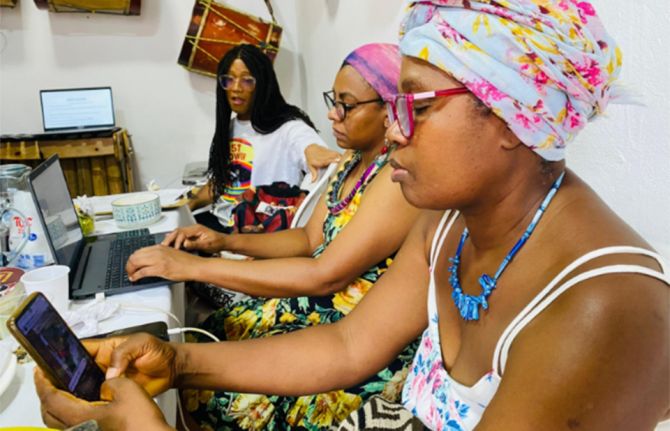
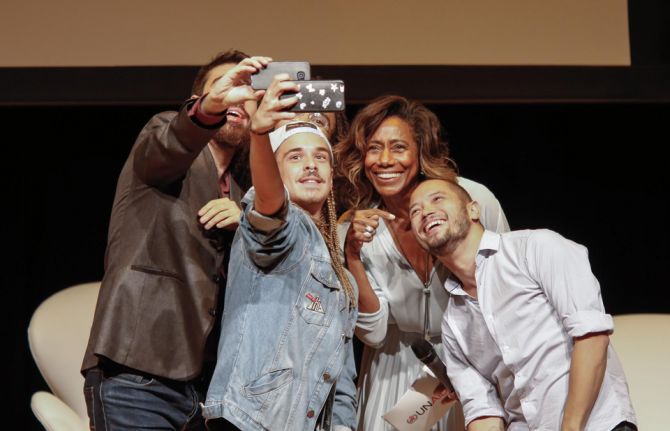
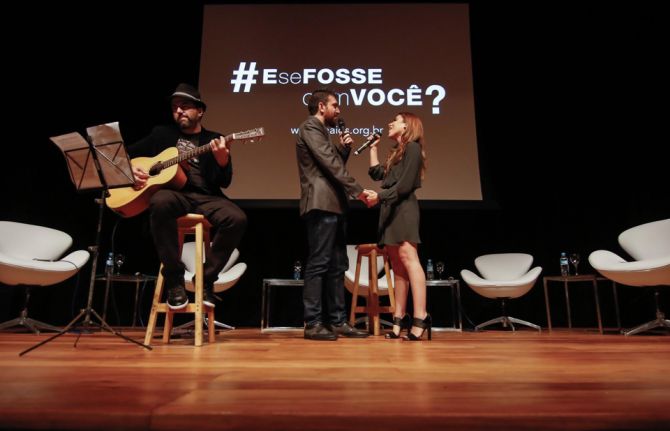
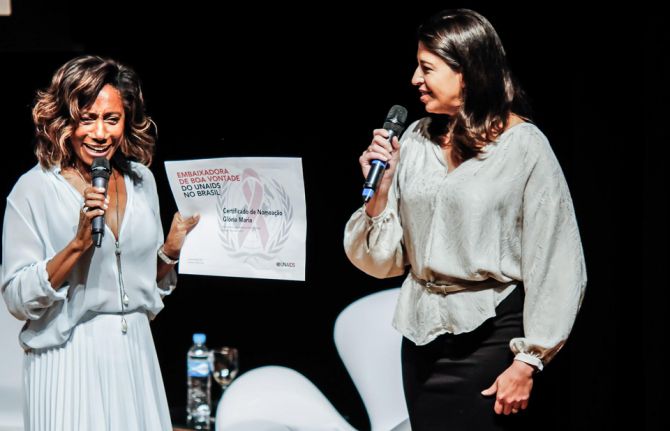
Feature Story
Young influencers debate HIV and discrimination in Brazil
16 June 2017
16 June 2017 16 June 2017YouTubers, influencers and virtual activists took part in inspirational conversations about HIV and discrimination in São Paulo, Brazil, on 30 May.
“No one in my group of friends and very few of my generation know anyone who died because of AIDS. Because past generations lived and witnessed so many AIDS-related deaths, there was this culture of fear, which is no longer present among us. However, we have not replaced this culture of fear with anything more positive,” said young Brazilian YouTuber Murilo Araújo, who describes himself in his channel, Muro Pequeno, as, “Proud to be gay, black, catholic, proud to be resistance in a society that tells me all the time that I cannot be any of that.”
Taboos, stigma both within and against the gay community, discrimination against people living with HIV and communicating to a highly connected generation were some of the topics debated. The event was moderated by renowned journalist and UNAIDS Goodwill Ambassador for Brazil Glória Maria, who asked, “Why do you think the HIV epidemic seems to be rebounding among young people, especially among gay men?” to trigger the first conversation.
“We saw all this in our biology classes, we saw it in campaigns. But it’s really hard to associate what they teach us with our real life, with relationships, with affection and with sexual experiences. I think this is the missing link we are trying to connect with our work on YouTube,” said actor and YouTuber Gabriel Estrela, from the Projeto Boa Sorte channel. “It seemed like something very distant from my reality, something that only happens in the movies.”
New HIV infections have grown substantially among young men, especially young men who have sex with men, in Brazil in the past decade. According to data from the Ministry of Health, they almost tripled among youth aged 15 to 19, and more than doubled among those aged between 20 and 24.
Nathan Fernandes, the Editor of Galileu Magazine, one of Brazil’s most influential monthly magazines among young people, said that, “The press played a very important role at the beginning of the epidemic. The first cases were reported even before civil society was able to organize itself for a common response. The problem is that the same press also reinforced stigma and discrimination by describing AIDS as the “gay plague” or “gay cancer”, among other things. We are now very aware that we have to be very careful with what and how we report,” he added.
As gay social networks become popular, discussions about HIV and prevention tend to gain the spotlight, said André Fischer, Director of Hornet Brazil. “We can’t run away from the fact that AIDS is still an important issue for the gay community. It is still a strong taboo subject. But we see more and more people being able to come out and reveal their HIV-positive status.”
Digital activist Matheus Emilio said it is possible to include HIV in the discussions of social networks and help break stigma and discrimination around the subject. Mr Emilio runs the Facebook page Menino Gay, with a focus on the lesbian, gay, bisexual, transgender and intersex community, whose posts reach more than 600 000 followers. “Besides talking about culture, music and lesbian, gay, bisexual, transgender and intersex rights, I also include information on HIV, health and prevention”, said Mr Emilio, who was diagnosed HIV-positive two years ago.
“Our goal is to promote connections among people and to promote a debate on HIV, with a focus on young gay men and other men who have sex with men, going beyond the point of view of science, health and public management. We want to create a debate involving young people, society, digital culture and human rights within the universe of young gay people,” said Georgiana Braga-Orillard, UNAIDS Country Director for Brazil.
The series of debates, #EseFosseComVocê? (What if it happened to you?), was organized by UNAIDS in partnership with the British Embassy in Brazil, Ogilvy Brazil, Hornet and Cultura Inglesa. The event, which was live-streamed on several accounts on Facebook, reached more than 300 000 online viewers.
Region/country
Related
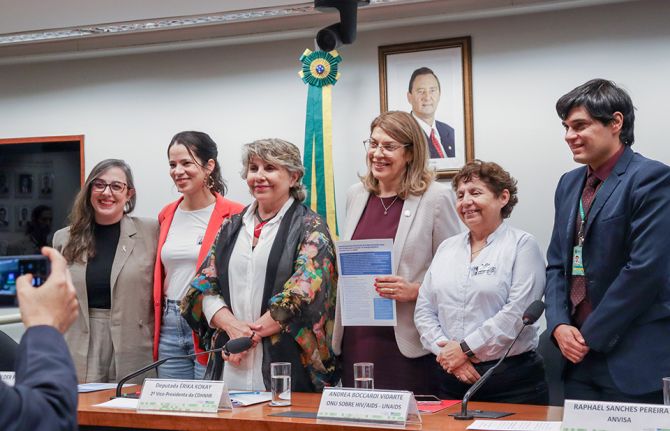 Lower prices needed for new HIV prevention medicine in Brazil
Lower prices needed for new HIV prevention medicine in Brazil

09 September 2025
 “Who will protect our young people?”
“Who will protect our young people?”

02 June 2025

